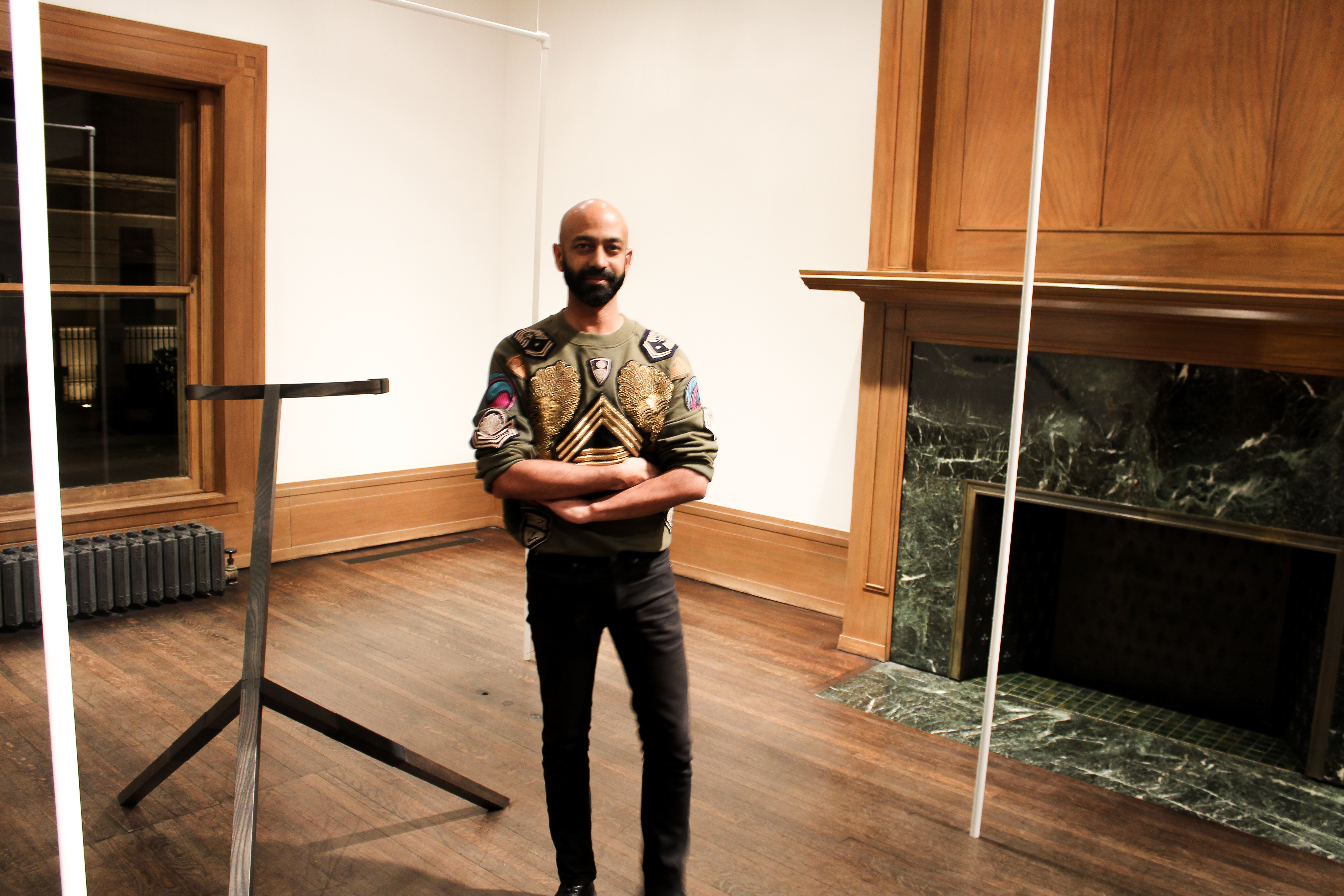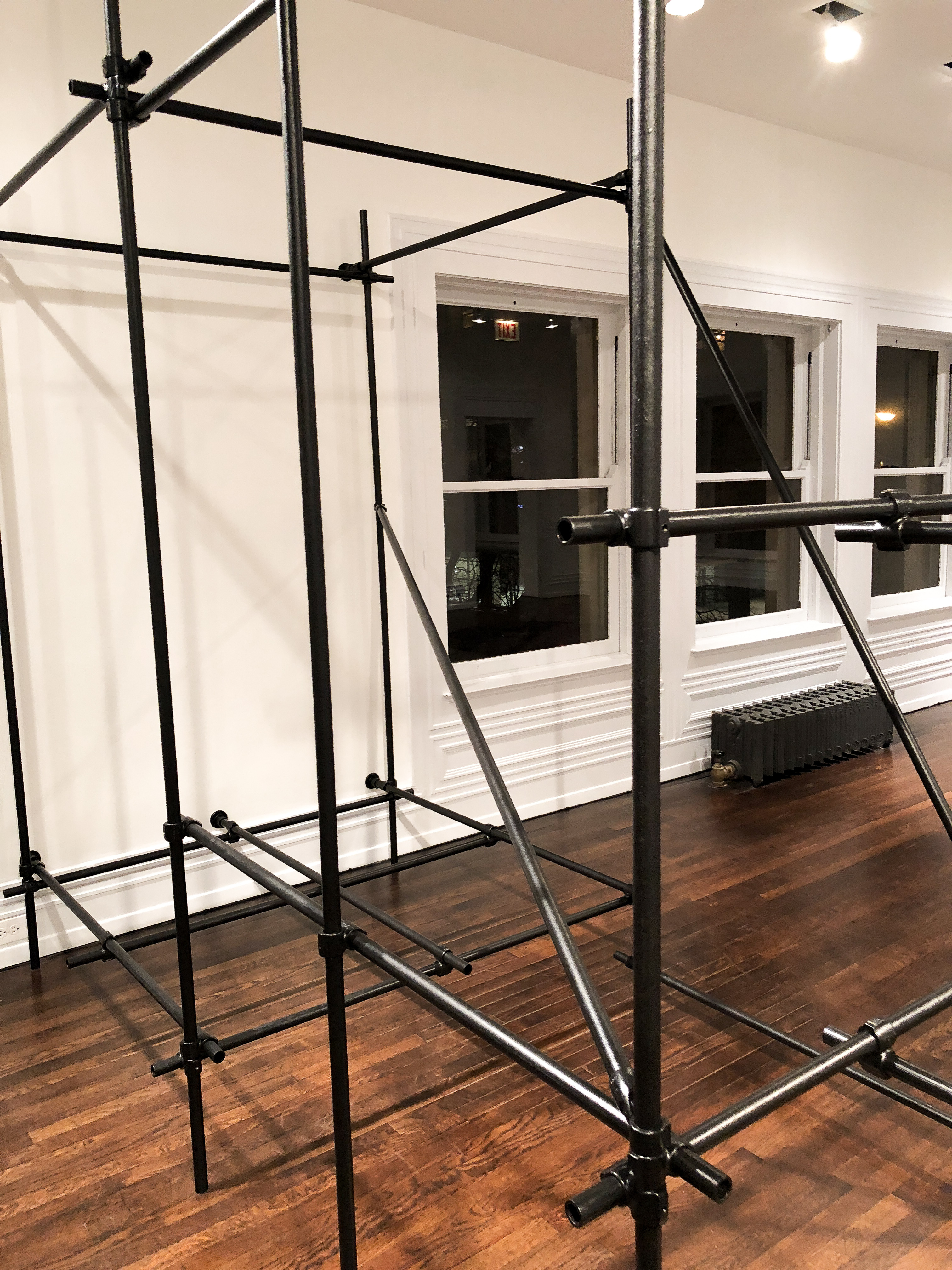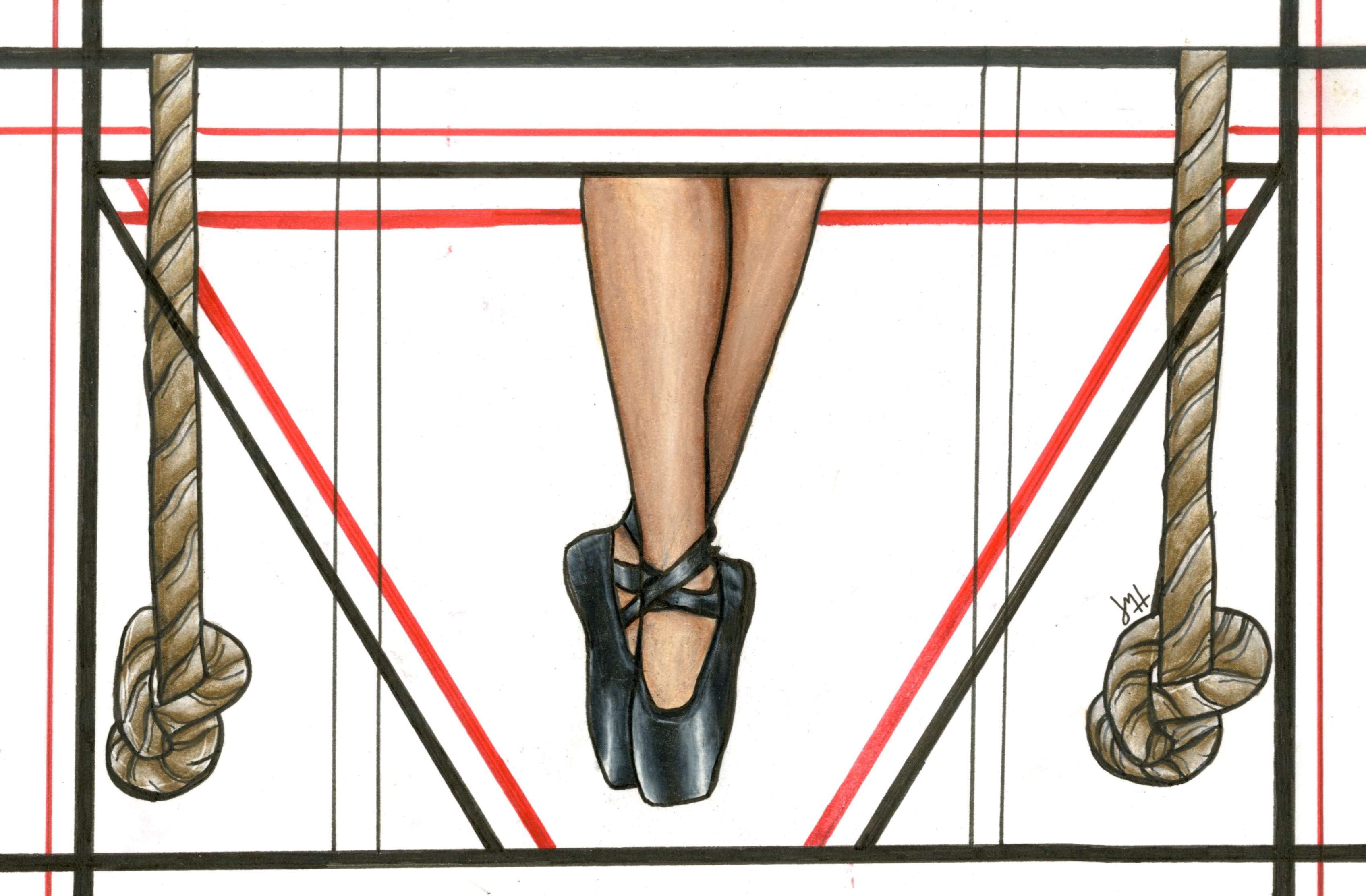Chicago artist Brendan Fernandes looks to his past discipline of ballet to explore the concept of control in the pursuit of form.
Brendan Fernandes: The Master and Form blends the world of ballet and architecture at the Graham Foundation’s Madlener House. In collaboration with ballet dancers from the Joffrey Academy of Dance and architects from Norman Kelley, the installation is sculptural and performative.
Fernandes drew inspiration from his time as a ballet dancer. “I am curious about the kind of etiquettes and the histories that lie in the world of ballet,” he said. “The form that ballet demands is a dance that is about being in position.”
The last performances with the dancers being physically present are March 10 and April 5, but the exhibition runs through April 7. Fernandes acts as the ballet master and choreographer as the dancers move through a series of movements utilizing the structural apparatuses ranging from ropes to metal bars.

Artist Brendan Fernandes at the Graham Foundation. (Photograph by Sarah Julien)
The deviant devices, designed in proportion to the ideal dimensions of a ballet dancer’s body type, push the model into seemingly impossible positions. The forced silhouettes expose the contorted ideology that the dance world demands—grace and control of motions that can only be achieved through rigorous training imposed by a dance master.
When Fernandes was a dancer, his feet were seen as imperfect, and, irreparably flawed in the eyes of his master. In pursuit of perfection, he would place his feet in a foot binding device to manipulate his arches. “The device pushed my body into this impossible position, and that was the beginning of the idea where these objects become devices that manipulate the position,” Fernandes said. “The [structures] are a burden to the body, while at the same time offering support and rest for the body to hold itself in the ideal form.”
Working in collaboration with Chicago- and New York-based architecture firm Norman Kelley, lead architect Carrie Norman said, “The Madlener House took on the role of a supporting character during the design process.” The devices reference the 1902 prairie-style mansion in terms of scale and design, but the streamlined structures focus on supporting the dancers’ bodies.
The exhibit is the product of Fernandes’ residency at the Graham Foundation in the fall of 2017. “During my residency, I started to think about my movements as I was walking up and down the house,” Fernandes said. “I focused on the threshold and the repeated doorways that act as an animation. The use of repetition allows the dancers to have a pathway to move through and creates trajectories of movement.”

Structural barre device on the second floor of the Master and Form exhibition at the Graham Foundation. (Photograph by Sarah Julien)
Upstairs on the second floor, a speaker in the corner of the room imitates the sounds of the dancers and dance Master. Heavy breathing, corrections from the master, footsteps and the creak and cracking of the wood floors under the weight of the dancers recreates the silent suffering in pursuit of mastering the craft. The simplicity in the sound of a hard box of the dancers’ pointe shoes meeting the old oak floors procures an element that places the dancer’s presence in the space—even in their absence.
“The recorded sounds elicit the physicality of the sculptures and their relationship with choreography within the space,” Ellen Alderman, Managing Director of Public Programs at the Graham Foundation, said.
An engaging insight into Fernandes and Norman Kelley’s design process is that they looked to the Madlener House’s original blueprints. “Upstairs there is the scaffolding that is actually the division of the original room, which was two rooms before,” says Fernandes. “The walls become austere and almost daunting. Is that a wall that I can penetrate through? When I walk through it, will it hurt? These thoughts bring it back to the idea of dungeons and spaces of pain and pleasure”—all elements that can be found in the pursuit of mastery in both architecture and ballet.
4 W. Burton Place, Exhibition through April 7, 2018
Header by Jenni Holtz




NO COMMENT